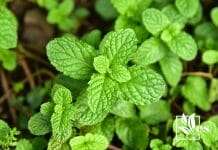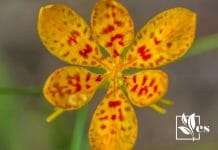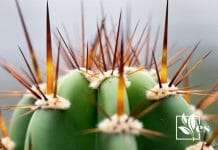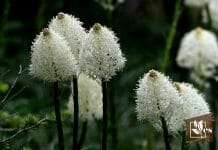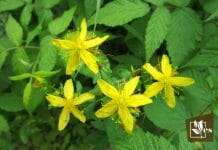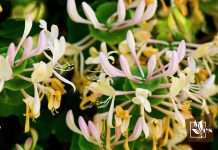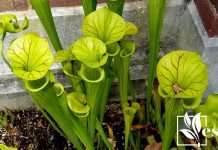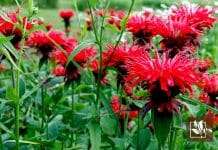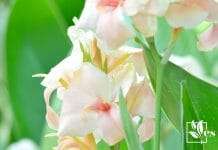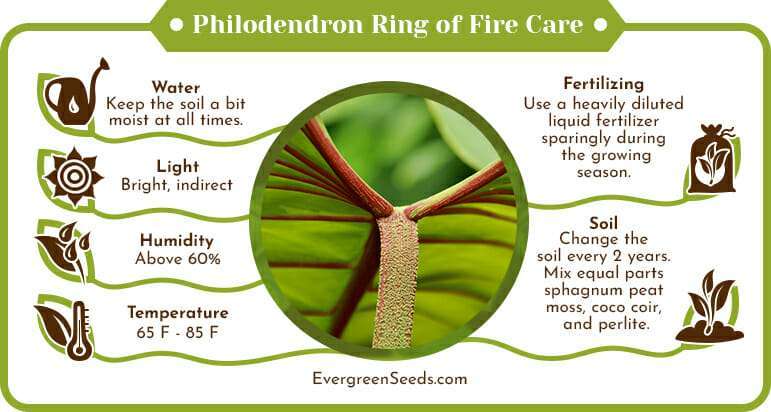 When it comes to indoor plants that collectors highly desire, the Philodendron Ring of Fire of the Araceae family ranks near the top.
When it comes to indoor plants that collectors highly desire, the Philodendron Ring of Fire of the Araceae family ranks near the top.
This plant is shamelessly attractive as each of its leaves is different variegation from the next. It sprouts in brilliant hues of orange, red, cream, and green. The leaves are large and deeply serrated, giving the plant the appearance of burning fire.
Healthy plants sell for lots of money, and nurseries sell out quickly, so getting one of these unusual philodendron plants isn’t easy.
This guide will give you the information you need to know about growing a Philodendron Ring of Fire.
These plants require a little more attention than some houseplants, but you’ll also need to learn when the plant can be left alone. It grows slowly, so a patient and attentive gardener will have the most success.
Anyone can learn the correct way to ensure healthy growth from a Philodendron Ring of Fire with this handy plant care guide.
JUMP TO TOPIC
Philodendron Ring of Fire Care Guide
The Ring of Fire philodendron is epiphytic, hemi-epiphytic, and terrestrial. Its epiphytic nature allows this plant to climb walls, bookcases, and moss poles with grace, and it will also trail from hanging pots in search of the ground. Roots can sprout from the climbing or trailing stems.
When you plan to provide the ideal conditions, you best pay attention to the numerous ways this plant prefers to grow. Some gardeners may have success with this plant outdoors, but this is best kept as a houseplant for most people.
 Light Requirements
Light Requirements
When you are growing the Philodendron Ring of Fire, you want the most impressive foliage possible. The best way to ensure you have excellent colors is to monitor the light conditions your plant receives strictly.
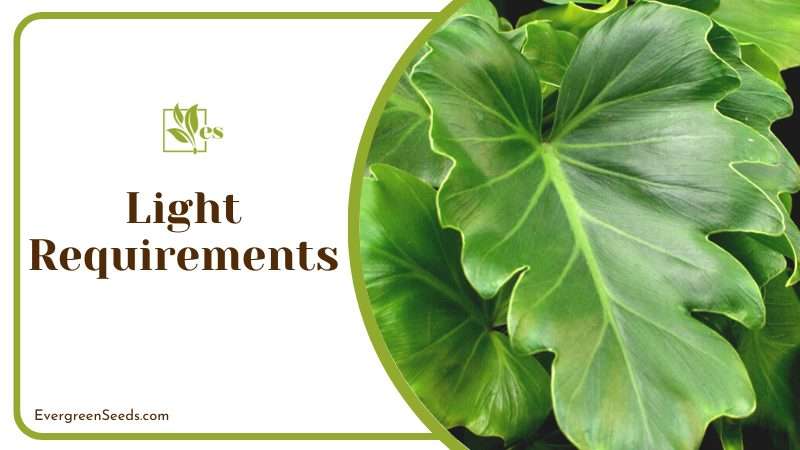
Each plant will vary somewhat in the amount of light it likes, but generally, these plants prefer bright, indirect sunshine.
-
Choosing a Location
You may want to try your plant in a south or southeast-facing window and monitor the color of the leaves. If you notice the leaves lightening, looking dull, or drooping during the day, you should move the plant to a less brightly lit area.
Over time, you can teach these plants to prefer more light, but you must move them only a little at a time until they acclimate to brighter light.
-
What Too Much Light Is Like
Most of the Philodendron Ring of Fire plants that hit the market are grown under strict greenhouse conditions. The plants typically grow beneath 20 to 40 percent shade cloth, so they are not accustomed to experiencing very much bright light. If you go slowly, your plant will learn to love brighter light and produce more beautiful colors.
-
Encourage Your Plant to Grow with Light
When this plant is grown in lower light conditions, it won’t produce as many colors, nor will it develop the intensity you are looking to get. Another problem with too little light is that the plant will grow more slowly in dim conditions. If you want to get the fastest, most colorful growth, you need to maximize the amount of light you provide for your plant.
 Temperature Requirements
Temperature Requirements
This plant comes from a hybridization of two tropical species, so it must have warm temperatures to grow successfully. The ideal temperature range is from 65 to 85 degrees, but you should try to keep temperatures as consistent as possible. Variations even within the preferred range can have a serious effect on the way your plant grows.
During the growing season, you should keep temperatures on the higher end of the spectrum to encourage growth. During the dormant season, letting temperatures drop will help the plant rest and develop new roots.
 Water Requirements
Water Requirements
You must pay close attention to the watering needs of this plant. The Ring of Fire has a specific temperature, quality, and amount of water that it needs.
The Philodendron Ring of Fire is not known to be forgiving of neglect. Improper watering can quickly lead to serious health problems for your plant -possibly even causing it to die.
-
How Much Water to Give
You want to keep the soil somewhat moist at all times, but avoid letting the substrate be wet or mucky. Philodendron Ring of Fire plants do not like to dry out between watering, either.
Getting the perfect balance between too wet and too dry depends on the air temperature, humidity, and the amount of light that your plant gets during the day.
-
The Right Way to Water
Like many tropical plants, you want to avoid getting the leaves soaking wet when you water because this can invite pests and disease.
The right way to water these plants is to slowly add water, soaking the surface entirely until water runs from the drainage holes on the bottom of the plant. Let the plant rest for thirty minutes to drain. If water is still running out of the pot after thirty minutes, you are overwatering the plant.
You should plan on checking the soil to make sure it stays moist at least every other day. These plants require more water during the growing season and may need a good drenching every three to four days. In the dormant season, you may only need to water every two weeks. If you notice leaves drooping during the warm months, the first thing you should check is the soil. If it is dry, your plant needs water immediately.
-
The Right Type of Water
These plants are susceptible to injury from chemicals used to treat tap water. You should always avoid watering plants with tap water. A better choice is distilled, filtered, or bottled water. In many places, you can fill five-gallon bottles with distilled water for only a few pennies.
If you must use tap water, the best option is to fill a large container with a large opening and let the water sit for 48 hours. This process allows the chemicals in the water to gas off, reducing the damage tap water does to the plant.
-
Providing the Best Temperature of Water
Don’t provide cold water to these plants. They prefer warmer temperatures, and cold water will shock the roots. The shock will slow growth and cause the plant to react badly. You can even cause leaves to drop by watering with cold water.
The best way to get water to the correct temperature is to leave it on a counter for several hours before watering the plant.
 Humidity Requirements
Humidity Requirements
Just like with watering, the Ring of Fire philodendron needs to be kept in ideally humid environments to thrive. These plants prefer higher humidity than some species and generally grow best when kept above 60 percent humidity.
During warm, growing months, you can use a spray bottle with distilled, room temperature water to gently mist the leaves and increase humidity. You will want to avoid misting it too much because water can accumulate and cause health problems. Make sure to mist the tops and bottoms of the leaves for best results.
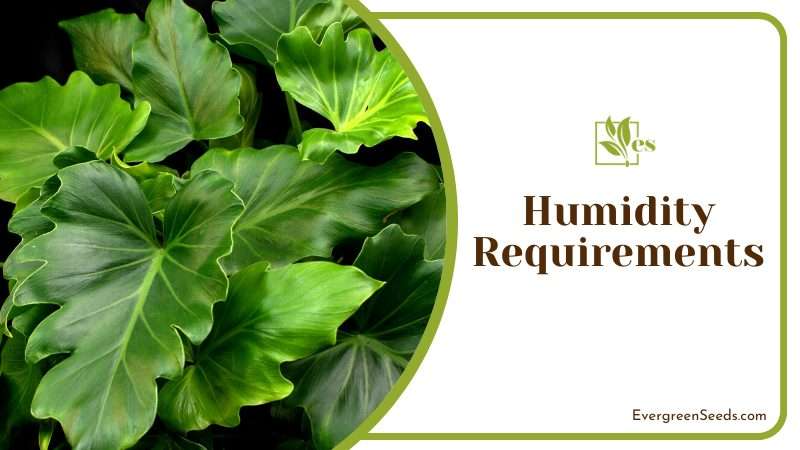
Growing the Philodendron Ring of Fire with other philodendron, monstera, and pothos plants can help increase humidity. These plants tend to have similar light and temperature requirements, making them ideal for display in a beautiful indoor garden. By growing plants together, they will help each other to keep the air moist.
A simple evaporative tray will also work well to increase humidity. This is a great option when you are growing this plant all alone. You can use any shallow tray that holds water and enough stones, pebbles, or other objects to support the pot out of the water. As the water evaporates, it creates a humid blanket that nourishes the leaves of your plant.
 Soil Requirements and Repotting Needs
Soil Requirements and Repotting Needs
This is a slow-growing plant that doesn’t require frequent repotting. These plants prefer to be somewhat root-bound. You should wait until roots are growing out of the bottom of the pot to transplant into a bigger container.
You may only need to repot every two or three years when growing a Philodendron Ring of Fire. You should use a time-release fertilizer every time you repot these plants.
-
Ideal Soil Conditions
You should plan on changing the soil in your Ring of Fire plant at least every two years. Changing the substrate provides a fresh dose of nutrients and eliminates the accumulation of metals and salts.
There are lots of different opinions on the best soil substrate for growing these plants. We recommend a custom mix that you can make from commonly available ingredients.
The best potting mixture for this philodendron type is equal parts sphagnum peat moss, coco coir, and perlite. You can add a small amount of well-aged compost and mulch to the mix to provide plenty of nutrients. Since this plant prefers to have consistently moist soil, you want a mixture that holds water, but not too much.
Our combination tends to work very well for tropical plants like the Philodendron Ring of Fire because it provides long-lasting nutrition and supports easy root growth which is essential for growing big, colorful plants.
You can use a heavily diluted liquid fertilizer sparingly during the growing season, but it isn’t necessary if you provide the proper soil mix and add time-release fertilizer.
-
Choosing a Pot
Almost any pot will suffice for the Philodendron Ring of Fire plant. The main thing is to select pots with plenty of drainages. Avoid pots that have built-in catch trays, as these often lead to overwatering.
When you are replacing a pot to transplant a growing plant, select a pot only slightly larger than the one you were previously using. The roots can stress when there is too much soil and the extra space contributes to rot and diseases.
Propagation Techniques
The best way to get more Ring of Fire plants is through propagation. This is a slow process that frequently doesn’t work well. The difficulty in propagating these plants is one of the reasons they are expensive and rare.
Take your time when you attempt to propagate these plants, and you are more likely to have success. Professionals highly recommend rooting hormones to encourage root growth.
– Stem Cutting Method
The method of propagation is stem cutting. You will select a growing, healthy stem that has several leaves. Using a pair of sharp, sterile scissors, cut the stem just below a leaf node. Cut two or three leaves from the cutting and immediately immerse in the rooting powder.
Fill a small pot with the appropriate type of potting mix and make a hole deep enough to accommodate the cutting. Press the cutting into the soil and gently compact the potting mix to ensure the roots are completely covered. Water the soil well and cover the cutting with a plastic bag.
Check the cutting every two or three days to make sure it doesn’t dry up. You should see new growth in about one month with the cutting you took. Most of the time, your cutting will die in a few days if it isn’t going to make it.
– Air Layering
This method will work but requires mature, exceptionally healthy plants to be successful. As the epiphytic stems grow, you will notice aerial roots forming.
You can wrap these roots in peat moss that is well-wetted and wrap the layer in plastic cling wrap. Check it every two or three days to make sure the moss stays moist. The aerial roots will root into the moss in about three weeks. Once the roots have formed, all you need to do is cut the stem and place the cuttings in a pot with the right soil type.
These plants only produce aerial roots when humidity, light, and temperature conditions are correct. If your plant is several years old and not growing aerial roots, it is struggling to survive. You should consider increasing humidity, light, or water frequency and make sure the plant isn’t suffering from drastic temperature changes.
The Ring of Fire is a philodendron plant hybrid. The exact lineage isn’t entirely clear, but this was once called Henderson’s Pride. That name belongs to a different plant that has more serrated leaves without intense coloration.
As a hybrid, it is only reproduced through propagation techniques, and the plant is known as a slow-grower even by philodendron standards.Slow growth and the need for manual propagation have made this a rare plant in the industry.
Problems
This plant suffers from many of the same issues as other houseplants. Learning to correct problems before they get out of hand is critical to growing a beautiful plant.
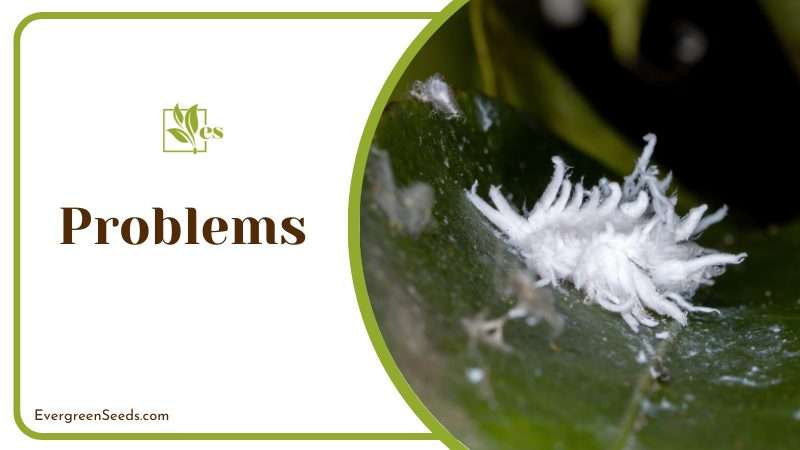
Some problems can be solved by changing your care routine, while others may require you to spend some time and energy trying to save your Philodendron Ring of Fire.
The best thing you can do is pay attention to the growing conditions and don’t deviate, which causes most of the significant troubles.
1. Pests
As a houseplant, you aren’t likely to see many pests. Mealybugs and spider mites are the most common. Both insects thrive in moist, humid conditions that are exactly the care requirements for this plant.
A homemade insecticidal spray of alcohol, dish soap, and water in a spray bottle is often enough to eliminate small numbers of pests. You can also dab the insects with alcohol or wipe the leaves to prevent bugs.
2. Disease
Philodendron plants are not typically susceptible to many common diseases. Some, like wilt, blight, and leaf spots, are usually the result of insects. These diseases are relatively rare and do not present much of an issue for the average gardener.
Root rot is another story. This fungal infection is common in wet, poorly draining soil. You will notice the stems and leaves of your plant becoming mushy and yellow. You will need to remove the plant from the pot, discard as much soil as possible, and cut the infection from the plant.
If the disease has overtaken most of the root ball, your only option will be to take stem cuttings and hope for the best.
You can check out the following philodendron varieties: philodendron white princess, philodendron silver stripe, philodendron shangri la, philodendron jose buono, and philodendron spiritus sancti.


